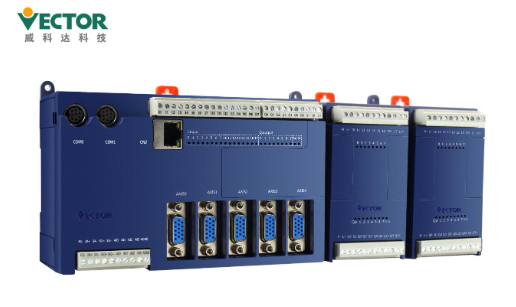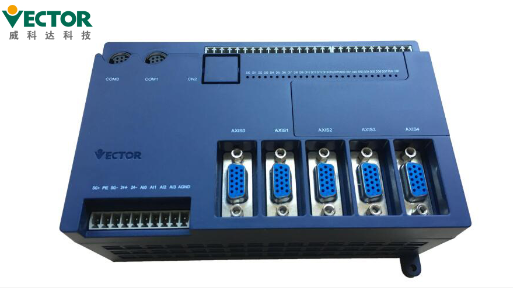Programmable Logic Controller (PLC) is a digital operation electronic system designed specifically for applications in industrial environments. It uses a programmable memory to store instructions for performing logic operations, sequential control, timing, counting, and arithmetic operations inside it. It controls various types of mechanical equipment or production processes through digital or analog input and output.
Programmable Logic Controller (PLC) is a digital arithmetic controller with a microprocessor for automatic control, which can store and execute control instructions in human memory at any time. The programmable controller is composed of functional units such as CPU, instruction and data memory, input/output interface, power supply, digital to analog conversion, etc. In the early days, programmable logic controllers only had the function of logic control, so they were named programmable logic controllers. Later, with continuous development, these computer modules with simple functions at the beginning had various functions, including logic control, timing control, analog control, and multi machine communication. The name was also changed to Programmable Controller, However, due to the conflict between the abbreviation PC and the abbreviation Personal Computer, and due to customary reasons, people still often use the term programmable logic controller, and still use the abbreviation PLC. The essence of a PLC programmable logic controller is a computer dedicated to industrial control. Its basic components include: power supply module, CPU module, memory, I/O input and output module, backplane and rack module, communication module, functional module, etc.
PLC Programmable Logic Controller: PLC is fully known as Programmable Logic Controller in English and programmable logic controller in Chinese. It is defined as an electronic system operated by digital operations, designed specifically for use in industrial environments. It uses a class of programmable memory for storing programs internally, executing user oriented instructions such as logical operations, sequential control, timing, counting, and arithmetic operations, and controlling various types of mechanical or production processes through digital or analog input/output. DCS Distributed Control System: The full English name of DCS is Distributed Control System, while the full Chinese name is Distributed Control System. DCS can be interpreted as an automated high-tech product that is widely used in industries where there are many analog loop controls, minimizing the risks caused by control, and centralizing management and display functions. DCS generally consists of five parts: 1: controller 2: I/O board 3: operation station 4: communication network 5: graphics and process software.
1. Power module, which provides internal working power for PLC operation, and some can also provide power for input signals.
2. CPU module, which is the central processing unit of PLC, is the core of PLC hardware. The main performance of PLC, such as speed and scale, are reflected by its performance;
3. Memory: It mainly stores user programs, and some also provide additional working memory for the system. Structurally, the memory is attached to the CPU module;
4. I/O module, which integrates I/O circuits and is divided into modules of different specifications according to the number of points and circuit type, including DI, DO, AI, AO, etc;
5. Base plate and rack module: It provides a base plate for the installation of various PLC modules, and provides a bus for the connection between modules. Some backplanes use interface modules and some use bus interfaces to communicate with each other. Different manufacturers or different types of PLCs from the same manufacturer are not the same;
6. Communication module: After connecting to the PLC, it can enable the PLC to communicate with the computer, or PLC to communicate with the PLC. Some can also achieve communication with other control components, such as frequency converters, temperature controllers, or form a local network. The communication module represents the networking capability of PLC and represents an important aspect of PLC performance today;
7. Functional modules: Generally, there are high-speed counting modules, position control modules, temperature modules, PID modules, etc. These modules have their own CPUs that can pre process or post process signals to simplify PLC CPU control of complex programmable controls. The types and characteristics of intelligent modules are also greatly different. For PLCs with good performance, these modules have many types and good performance.
Post time: Mar-21-2023








